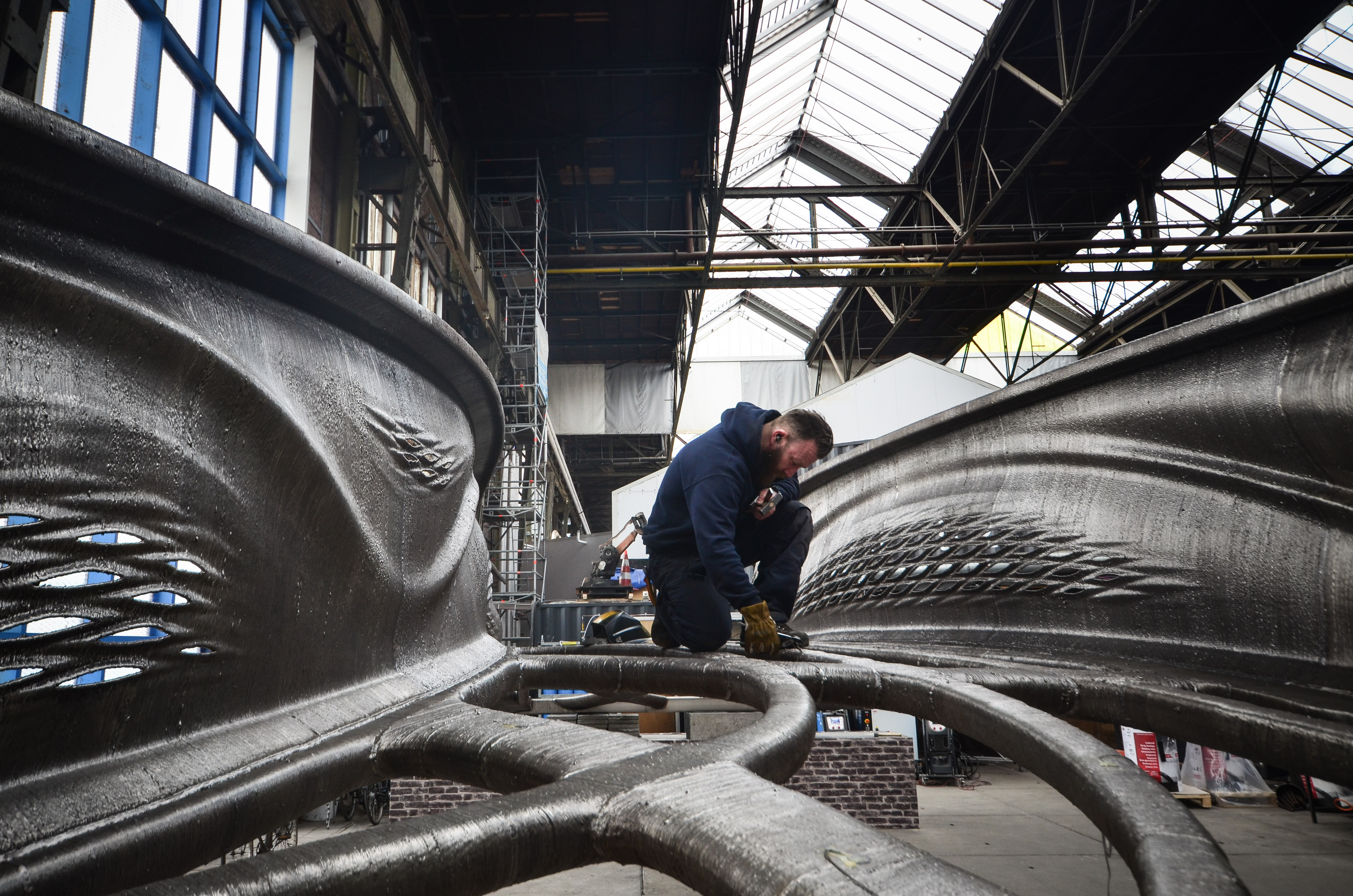It would look at home on the set of an Alien movie, but this intricate piece of infrastructure has a far more down-to-earth purpose.

It’s the world’s first 3D printed steel bridge, and it will soon provide a path for pedestrians across the Oudezijds Achterburgwal canal in Amsterdam’s famous red-light district.
Created by a consortium of mathematicians, IoT specialists and engineers working with Amsterdam-based startup MX3D, the bridge spans 12.2m, is composed of 4500kg of stainless steel, 1100km of wire and took four robotic welding arms six months to print.
The original plan was to print the bridge in situ, made possible by the MX3D’s development of a six-axis robort capable of large-scale, free-form printing – however, the location’s foot traffic made it impractical.
Final prints, a stainless steel deck and a coating to protect the otherworldly structure are expected to be completed in October, and the bridge will be installed in early 2019 once renovations to the 15th-century canals are completed.
One of the final touches will be a range of sensors, which will collect structural measurements such as strain, displacement and vibration, and will measure environmental factors such as air quality and temperature, enabling engineers to measure the bridge’s health in real time and monitor how it changes over its lifespan.
“This data will also allow us to ‘teach’ the bridge to understand what is happening on it – how many people are crossing it and how quickly,” MX3D co-founder Gijs van der Velden says.

The data will also feed into what the company calls a ‘digital twin’ – a living computer model that will reflect the physical bridge with growing accuracy in real-time as the data comes in. The performance and behaviour of the physical bridge will be tested against its digital twin, which MX3D says will provide valuable insights to inform future 3D printed metal structures.
“The MX3D technique offers engineers the freedom of working with metals in an entirely new way. The digital twin of the bridge will help with the creation of a new design language. We hope that this data-centric engineering method will speed up the introduction of this exciting new production technique into the construction market,” van der Velden says.
“It’s such a massive structure that immediately, even if you’re not a technician or someone who’s been playing around with this tech for years, you can see that steel objects are going to change drastically in the coming years.”